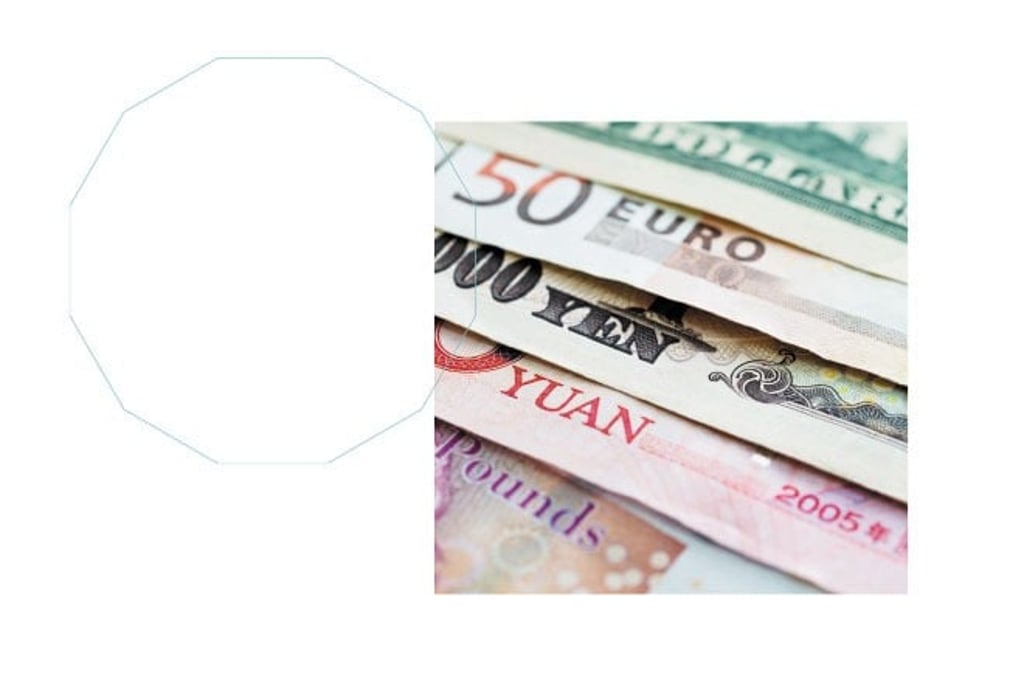Why Does China Want to Internationalize the RMB?
China will benefit from internationalizing the RMB, including as a force to drive domestic financial sector reform, but the process could take some time.
By Professor Edwin L. C. LAI, Department of Economics and Director of Center for Economic Development at HKUST Business School

[Sponsored article]
The Chinese government is trying to internationalize the RMB, and this gives rise to at least a few questions. What are the real reasons for this action? Will it succeed? What are the factors working in its favor? What are the impediments? What are the implications for the rest of the world?
The internationalization of the RMB is a process of turning the RMB into a currency widely used internationally as a unit of account, medium of exchange, and store of value. There are several benefits from an internationalization.
First, the exchange rate risks in trade, investment and financial transactions are minimized for Chinese citizens and the government.
Second, there is less reliance on foreign currencies such as the USD, and the associated institutions such as the payment system. China believes that if more of its trade were to be settled in RMB, China’s trade would suffer less under the shortage of the dollar or any other foreign currency. Moreover, the use of RMB for international payments would facilitate them to be handled by a payment system that is under the jurisdiction of China. The use of USD for payments, on the other hand, requires the use of a payment system under the jurisdiction of the US authority.
National security reasons
For national security reasons, China clearly does not want a foreign authority to have too much information about, and control over, the flow of payments into and out of China, which the foreign country could possibly exploit for its own benefit. China learned a firsthand lesson of the risk of conducting business using the dollar payments system in the case of MENG Wanzhou (孟晚舟), the Chief Financial Officer of the Chinese technology giant Huawei, who is still in custody in Canada facing extradition to the US.
Third, being able to borrow internationally in China’s own currency brings an important benefit for China. For the long-term development of China, its firms should be able to freely borrow from foreigners so as to finance their business. However, it would be much safer for Chinese firms to borrow internationally in RMB than to do it in a foreign currency. This would reduce the risk of a mismatch between the currency denomination of the revenue source (which is RMB) and the currency denomination of the debt (which is a foreign currency) of the companies, which can result in bankruptcy of the firms in the face of a sharp depreciation of the RMB when it is under speculative attack. It was this currency mismatch in Asian countries such as Thailand and Indonesia, in the face of a currency crisis, that caused widespread bankruptcy and economic disasters in these countries during the 1997-1998 Asian Financial Crisis.
Fourth, when a currency becomes sufficiently internationalized, the country’s citizens and government might be able to borrow abroad large amounts at low interest rates in the country’s own currency. The US is a case in point. The yields of US Treasury securities are not impressive when compared with other financial instruments. Yet they are widely held by financial institutions and central banks around the world. This is because when the currency of a country is widely used as an invoicing and settlement currency in international trade, it can also more likely be a funding currency, that is, a currency chosen by borrowers to denominate their debts, such as bonds or loans. This is a result of the interest rate being lower due to the high demand for the currency for trade invoicing and settlement.
Business for the banking sector
Fifth, wide international use of the RMB would provide more business for the banking and financial sectors of China. When the RMB is more widely used, it benefits Chinese banks and financial institutions, as the international demand for RMB assets would bring business to domestic financial institutions, as payments in RMB have to be ultimately handled by Chinese banks and financial institutions.
Sixth is the ability to earn seigniorage from foreign countries (issuing RMB to foreigners in exchange for real goods). When foreigners trust the RMB, they are willing to hold the currency as a medium of exchange and store of value. Thus, they are willing to sell goods to China in exchange for the RMB.
Seventh is political influence. When a currency becomes a major reserve currency for another country, the issuing country of the currency can use it as leverage to exchange for favor from the foreign country.
There is yet another, uniquely Chinese, reason for certain quarter in China to push for internationalization of the RMB. Certain quarters within the Chinese government wants to use the capital account liberalization and financial market liberalization that come with RMB internationalization to create pressure for domestic financial sector reform.
In my book, One Currency, Two Markets: China’s Attempt to Internationalize the Renminbi (forthcoming, Cambridge University Press), I explain how the problem with the international monetary system since the demise of the Bretton Woods system and the recent global financial crisis prompted China to seek independence from the dollar standard. One way is to make the RMB a widely accepted currency internationally.
An awkward position
China, however, is in an awkward position. On the one hand, it is the second largest economy and the largest trading nation in the world, and it would likely become the largest economy before long. This works in favor of the internationalization of the RMB. On the other hand, China is still an emerging economy, meaning that its financial and legal institutions are still immature compared with the more advanced system in the West. Yet, China does not want to fully integrate its financial system with the West any time soon. As currency internationalization requires the currency to be largely convertible in the capital account, this factor works against the internationalization of the RMB. Thus, China tries to internationalize its currency in its own unique way, i.e. by adopting the “one currency, two markets” approach, which entails establishing a global offshore RMB market.
Through this strategy, China sets up a firewall between the onshore and offshore markets, allowing full convertibility of the RMB in the offshore market but partial convertibility in the onshore market. Behind this approach are a number of policy measures, including financial market liberalization, capital account opening, and the facilitation of the formation of a number of offshore RMB centers, such as Hong Kong, Singapore, and London.
Based on theory and evidence, I conclude that China’s economic size, its commitment to sufficiently free capital mobility, the development of a deep, broad and liquid financial market, and people’s confidence in the RMB are the four key factors for the success of RMB internationalization. China has economic size, but it needs to work on the other three factors. It is not at all clear whether and when China would achieve the sufficient degrees of capital mobility and financial market development to make the RMB a significant international currency on a par with say the euro, not to mention the USD.
Moreover, it seems difficult for a country without a mature legal system and a system of checks and balances to secure the confidence of the world on its currency. Thus, my conjecture is that, in the intermediate term, the RMB would only be a distant third payment currency (behind the USD and the euro). In the longer run, because of China’s large GDP and continuing reforms and opening, and the world’s central banks’ demand for safe assets for foreign exchange reserves, the world may become a multi-reserve-currency system, with the USD, Euro and RMB being the three main reserve currencies. However, the road for the RMB to get there may be quite long and uncertain.

Positive feedback
Based on econometric analysis, I find that financial development and capital account opening are much more important than the GDP of China in making the RMB an international currency. My model predicts that it is possible that, by 2030, the RMB can rank a distant third (behind the USD and the euro) in the global ranking of currencies used in international payments, surpassing the British pound sterling. I estimate that RMB’s payment share can reach 6.6% by 2030 (it is about 1.5% to 2.0% today, compared with about 55% for the USD and about 20% for the euro1). However, this is possible only if China greatly speeds up its financial development and capital account opening in the next decade.
I also argue that there is a positive feedback effect (or synergy) between capital account liberalization and domestic financial sector reform. This argument provides the rationale for using the internationalization of RMB to force domestic financial sector reform. This is called “daobi” (倒逼) in Chinese, which I believe is (silently) advocated by some quarters in the Chinese government. I argue that “daobi” is one important motivation of internationalizing the RMB. For this reason, the sequence of liberalization in China should not strictly follow that of conventional wisdom, namely financial market liberalization should take place before capital account liberalization. Instead, the two liberalization initiatives should proceed interactively in tandem.
1. Intra-eurozone payments and payments to/from global market infrastructure are excluded.